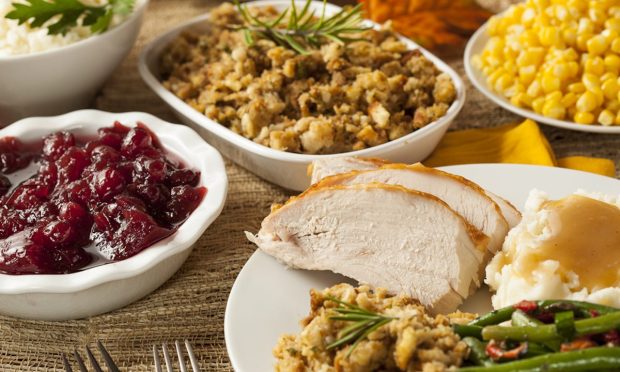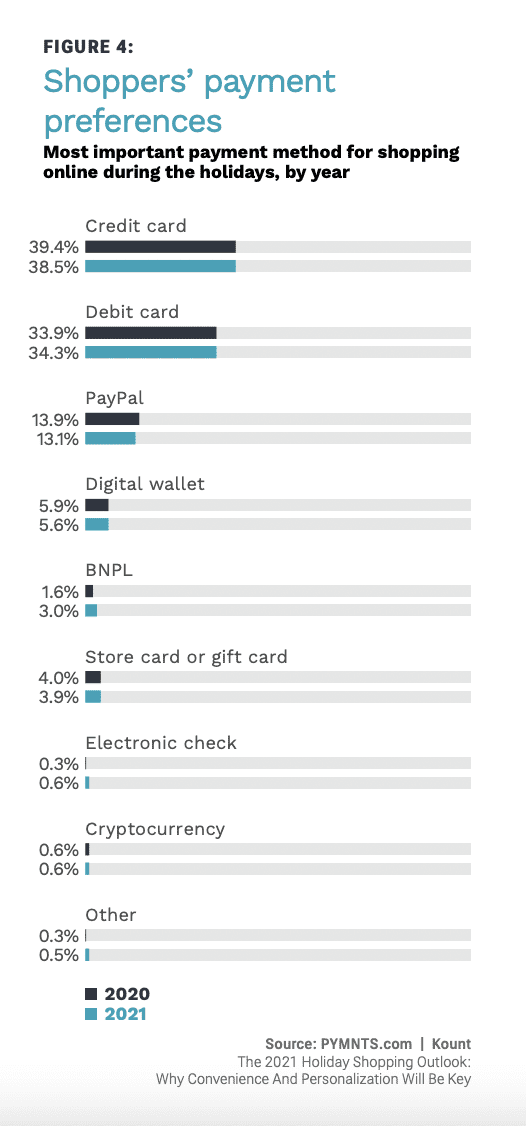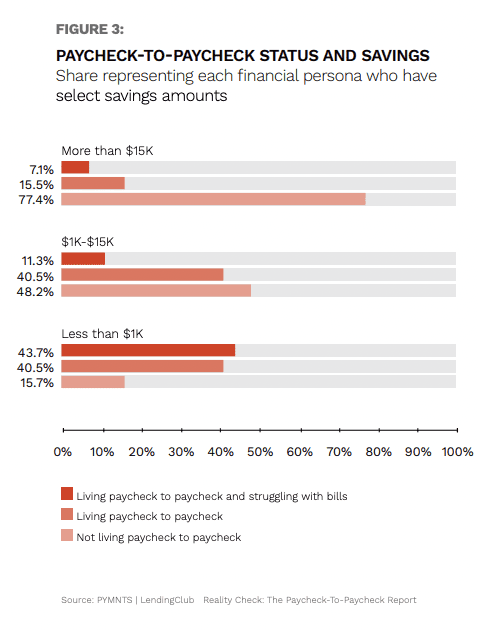In Time-Honored Tradition, Consumers Reach for Debit, Credit Cards to Pay for Thanksgiving Dinner

The past several weeks have seen countless reports about the challenges that would give a cockeyed optimist momentary pause before giving thanks: supply chain issues delaying deliveries of turkeys and other staples, inflation pushing prices higher and a pandemic that just doesn’t seem to want to let go.
Related news: Farm Bureau: Inflation Gobbling Thanksgiving Budgets
But amid all the turmoil, Thanksgiving Day rolls on, and with it the cranberry sauce, green bean casserole, mashed potatoes and other traditional family favorites that grace the table year in, year out. And when it comes to paying for the feast, Americans don’t seem to be breaking with another tradition this year: pulling their credit or debit cards out of their wallets — despite a proliferation of newer digital options and buy now, pay later (BNPL) offerings.
According to PYMNTS’ holiday shopping outlook, published in collaboration with Kount, nearly 39% of consumers say their credit card is the most important payment method, down slightly versus 2020, and 34% say their debit card is most important, about the same share as last year. Just 3% say BNPL is most important, though it’s gaining ground at nearly double the share a year ago.
 Also see: NEW DATA: Nearly 90% of US Consumers Plan Online Holiday Purchases in 2021 — 13% More Than in 2020
Also see: NEW DATA: Nearly 90% of US Consumers Plan Online Holiday Purchases in 2021 — 13% More Than in 2020
Before everyone heads off to their turkey trots each year, the American Farm Bureau trots out its informal cost index for a traditional Thanksgiving for 10 — turkey, stuffing, sweet potatoes, rolls with butter, peas, cranberries, a veggie tray, pumpkin pie with whipped cream, and coffee and milk. That’s all expected to cost $53.31, or $5.33 per person, this year, up 14% from 2020’s average of $46.90. And a 16-pound turkey costs an average of $23.99, up 24% year over year.
A Lean Thanksgiving
These prices are increasing as millions of consumers also face strained budgets: A total of 131 million U.S. adults are living paycheck to paycheck, according to a recent PYMNTS study conducted in collaboration with LendingClub. That amounts to nearly 57% of consumers who have little to nothing left over after paying monthly bills — slightly less than the same time last year, but a 2-point increase compared with six months ago.
Read more: New Data: Uptick in Paycheck-to-Paycheck Living Pegged Mostly to Financial Fears
Money may not be the only reason that people living paycheck to paycheck have smaller Thanksgiving gatherings this year, though. Sixty-two percent of them say they are very or extremely concerned about COVID-19, compared to just 50% of those who are not concerned about having enough money to cover bills each month. Among the top reasons for concern, they cited the pandemic’s economic impact, the possibility of another outbreak and lockdown, and the desire to avoid spreading the virus.
 See also: 33% Of Paycheck-to-Paycheck Consumers Won’t Shop More at Physical Stores Until the Pandemic Ends
See also: 33% Of Paycheck-to-Paycheck Consumers Won’t Shop More at Physical Stores Until the Pandemic Ends
For those who are expecting guests this year, though, a LendingTree survey released last week found that they’re increasingly taking on debt to host Thanksgiving, with 44% planning to do so this year compared with 38% in 2020 and 27% in 2019. Hosts are also less likely to stick to a budget, with only 27% having a “very firm” budget, down from 39% in 2020 . Twenty-one percent don’t have a budget at all.
“I do think that a lot of the uncertainty that is out there thanks to inflation, supply chain issues and other factors is likely affecting how people are handling their budgets, and that’s a good thing,” Matt Schulz, LendingTree’s chief credit analyst, said in a news release. “Budgets should be living, breathing, malleable documents, and that’s especially true in weird economic times like we’re in currently.”
